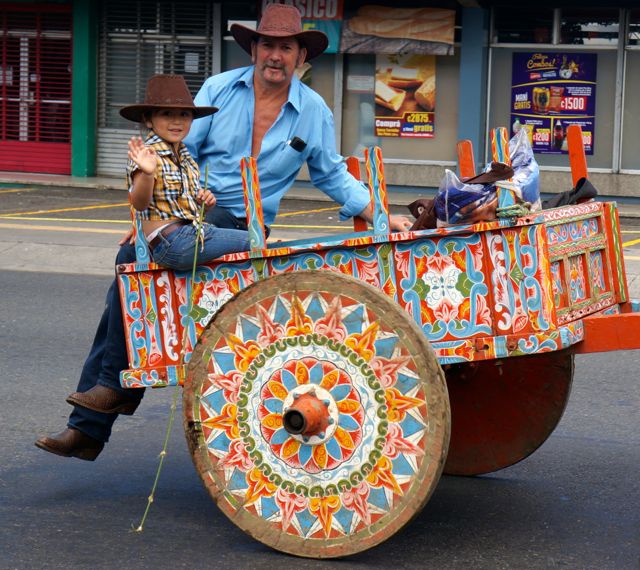
Discovering Costa Rican Traditions at the San Jose Oxcart Parade
If there’s one defining symbol of Costa Rican culture, it has to be the oxcart (ok, apart from football jerseys, coffee and cerveza Imperial, that is).
The importance of the oxcart, or carreta, dates back to the mid-nineteenth century. The elaborate, hand-painted carts were first used as a means to transport coffee beans.
While coffee is now Costa Rica’s sixth largest export to the tune of $362 million annually, the crop is actually not native to the country; the Arabica coffee plant was introduced in the 1700s. The fertile soil, high altitude and cool climate of Costa Rica’s Central Valley, made it the ideal environment for the crop to flourish.
In 1829 coffee became one of Costa Rica’s top exports, surpassing tobacco, sugar and cacao. The capital city of San Jose boomed as wealthy coffee barons and traders made the city their base in the Central Valley.
With no railroad built until 1890, coffee producers were faced with the challenge of transporting beans from the Central Valley over steep and winding mountains to the port of Puntarenas on the Pacific Coast. Ticos solved this challenge with the use of oxcarts.
Constructed of wood, oxcarts use spokeless wheels, modeled after those used by the Aztecs, and are pulled by oxen. Both the unique wheels and strong livestock help the carts to pass through mud and over steep terrain. The journey from the Central Valley to the port of Puntarenas takes ten to 15 days via oxcart.
As a symbol of social status, oxcarts slowly transformed from plain wood to featuring ornate and hand painted designs. Originally each region had its own unique design on the wheels to make it easier to identify coffee crops, however, the decorations soon evolved to include a higher level of detail and more one-of-a-kind designs featuring bright colors, flowers, faces and even animals.
With the advent of the railroad, cars and trucks, oxcarts were eventually replaced by more efficient forms of transportation, however they remain as an important symbol of heritage, traditions and culture in Costa Rica today. In fact, UNESCO even recognizes them as the country’s most famous type of craft.
This weekend I ventured out of my home in the rainforest and into the streets of San Jose to soak up some culture at the San Jose Oxcart parade. This annual parade brings more than 300 drivers, or boyeros, from rural farms to the cosmopolitan streets of San Jose where they display their finest oxen, bulls, cattle and, of course, hand-painted carts, in a parade.
The boyeros congregate in the morning at La Sabana, San Jose’s central park, and assemble to parade down Paseo Colon and Avenida Segunda, two of the capital’s most famous streets.
I stood on Paseo Colon as a swirl of oxcarts rolled on by. Ranging in color from natural wood to vibrant oranges, blues and even black, no two carts were alike. No two boyeros were alike either. Cowboys, or vaqueros, of all ages came out to show off their finest livestock and carts, and many families participated as a whole.
It was a delight to watch the multitude of carts pass by, and the collision of time-honored tradition in the modern, global-infused streets of San Jose defined what Costa Rica means to me.
As the last few carts rolled past I waved at one family in a bright orange cart.
“Venga, venga,” a man in a Costa Rican football jersey shouted, motioning for me to come on over. I slid under the rope and reached for his hand.
He pulled me into his cart and there I sat, if only for a moment, alongside three Tico vaqueros, taking in the sight of the streets from the edge of an oxcart. What a great way to end a culture-filled Sunday in Costa Rica!
Sorry, the comment form is closed at this time.




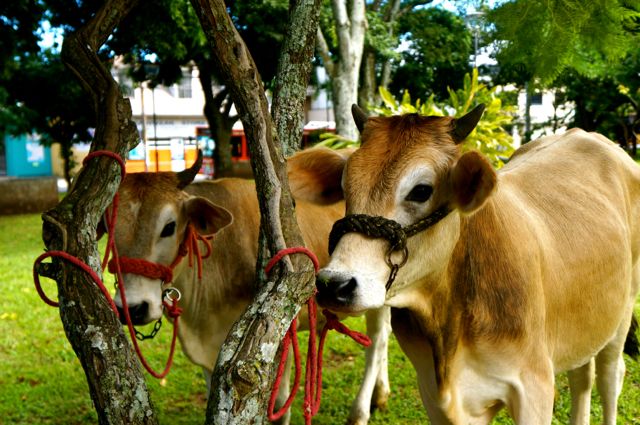
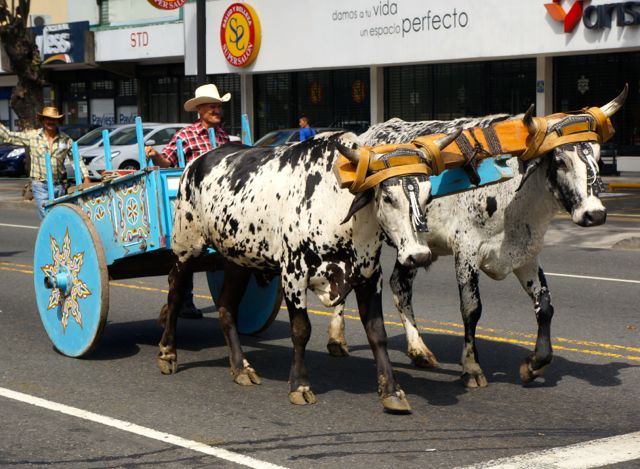
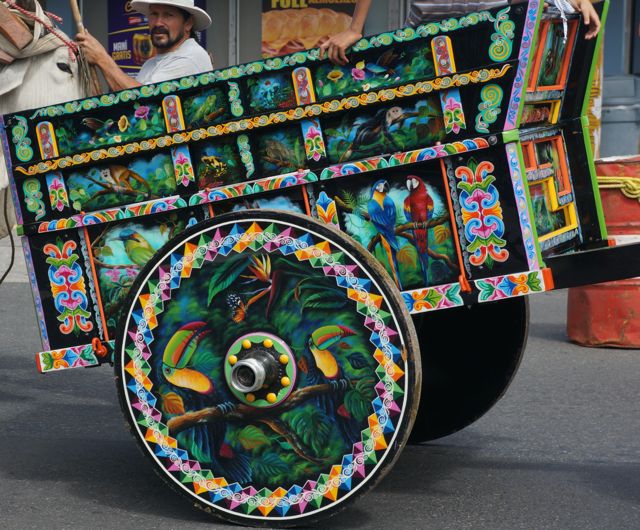
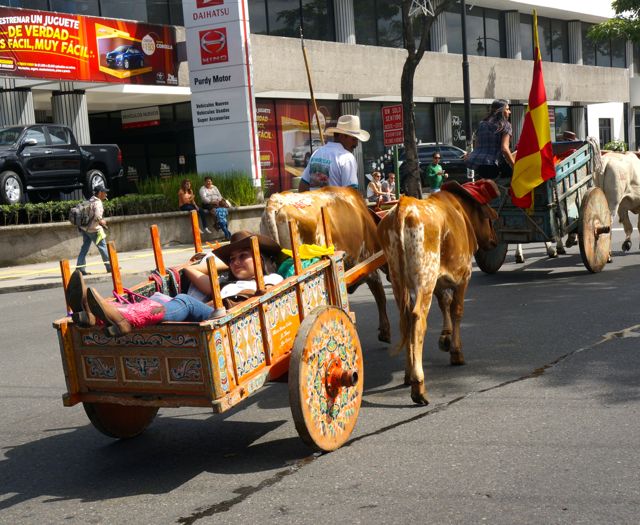
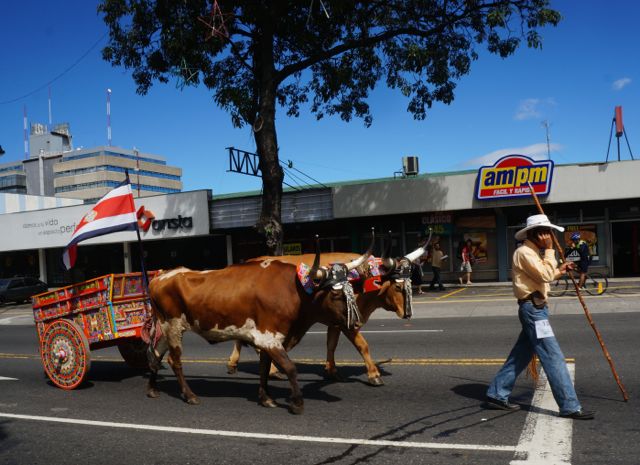
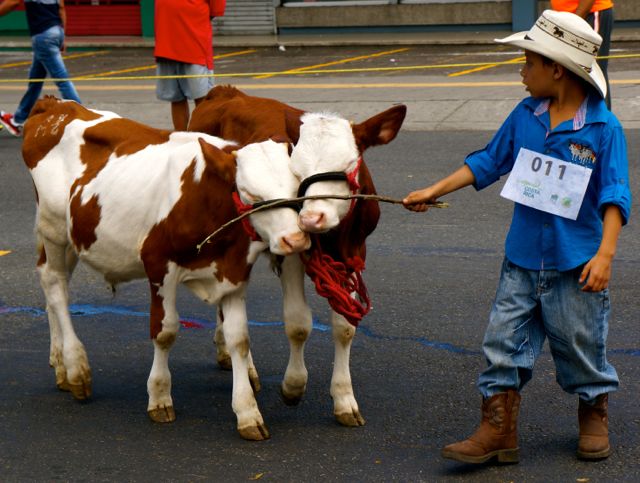
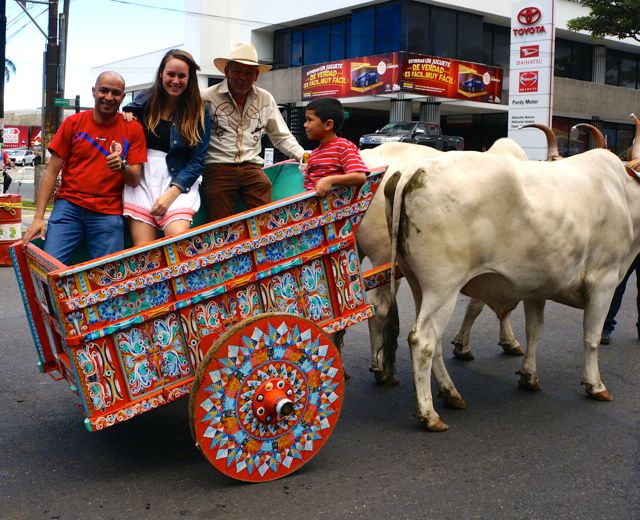


Jaime Mendenhall
Hello there! I’ll be studying abroad in San José this June, and I’ve been considering a tattoo of an ox cart wheel once I get back to the US (assuming I will have had a good experience, which I’m sure I will!). Loved this article, and glad to know there’s a parade in San José dedicated to it. Is it held every year in November, when you posted this? I’d love to go! I’ll only be there for the month of June though; so, if not, I’m hoping to visit Sarchí, where the world’s largest ox cart wheel is. ¡Pura Vida!